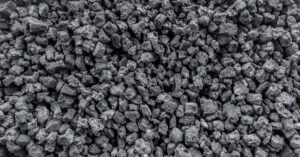
As of February 21, Ukraine exported 28.219 mln tonnes of grains and pulses since the beginning of 2024-2025 marketing year, of which 2.528 mln tonnes were shipped this month, the press service of the Ministry of Agrarian Policy and Food reported citing the State Customs Service.
According to the report, as of the same date last year, the total shipments amounted to 27.627 mln tons, including 3.751 mln tons in February.
In terms of crops, since the beginning of the current season, Ukraine has exported 11.714 mln tonnes of wheat (910 thsd tonnes in February), 2.113 mln tonnes of barley (49 thsd tonnes), 10.8 thsd tonnes of rye (0), and 13.954 mln tonnes of corn (1.561 mln tonnes).
The total export of Ukrainian flour since the beginning of the season as of February 21 is estimated at 46.4 thsd tonnes (2.9 thsd tonnes in February), including wheat – 42.9 thsd tonnes (2.8 thsd tonnes).

In January 2025, imports of tin and tin products decreased by 11.5% compared to January 2024, to $230 thousand. In December 2024, this figure was $338 thousand.
Tin is used mainly as a safe, non-toxic, corrosion-resistant coating in its pure form or in alloys with other metals. The main industrial applications of tin are in white tinplate (tinned iron) for food containers, in solders for electronics, in house pipelines, in bearing alloys, and in coatings made of tin and its alloys. The most important tin alloy is bronze (with copper).

Polling stations have opened in Germany for the early Bundestag elections. They will be open until 18.00 on Sunday. A total of 29 political parties are running in the election.
Since 08:00 on Sunday, February 23, polling stations have opened throughout Germany for voting in the early Bundestag elections. They will be open until 18.00.
There are about 59.2 million voters in the country. Of these, 24.9 million (42%) are over 60 years old. About 2.3 million voters (3.9%) are young people who have reached the age of 18 and are eligible to vote in federal elections for the first time.
About 200,000 more German citizens registered to vote abroad. Their total number is estimated at about 3-4 million. The reason for the low turnout among them is bureaucratic difficulties and the need to send a ballot to their home country by mail.
A total of 29 political parties are running in the elections. In all 16 federal states, 10 of them will run: The Social Democratic Party of Germany (SPD), the Union 90/Greens, the Free Democratic Party (FDP), the Alternative for Germany (AfD), the Left Party, the Sarah Wagenknecht Union (SZV), the Free Voters, Volt, the Marxist-Leninist Party of Germany, and the Alliance Germany. The Christian Democratic Union (CDU) is running in 15 states, except Bavaria. Its sister party, the Christian Social Union (CSU), is running there.
Pre-election polls promised the greatest support for the conservative CDU/CSU bloc. It was followed by the far-right AfD. Then came the center-left SPD and the left-liberal Greens. The rating of the Left Party, the left-wing populist FDP and the liberal FDP hovered around the 5% required to enter the Bundestag. According to sociologists, about 20% of voters were undecided about whom to vote for and whether to go to the polls at all.
The Experts Club and Active Group have previously released a video analysis of the most important elections in the world in 2025 https://youtu.be/u1NMbFCCRx0?si=-rc6YHH7EA1pnr7w
Source: https://amp.dw.com/ru/v-germanii-nacalos-golosovanie-na-vyborah-v-bundestag/a-71717875

The agreement between the United States and Ukraine on rare earth materials provides for the establishment of a commercial fund in which the United States will have a 100% financial interest and Ukraine will allocate funds for it. The text of the agreement, which is current as of Friday evening, February 21, is available to Ekonomichna Pravda.
The document is to be signed by Ukrainian Foreign Minister Andriy Sybiga and US Secretary of State Marco Rubio.
According to the draft agreement, Ukraine and the United States are establishing a commercial investment fund for reconstruction, in which the United States will retain 100% of the financial interest. Ukraine and the United States will manage it jointly.
The Fund is expected to help increase foreign direct investment in Ukraine by at least two times for every dollar contributed. The goal is to return Ukraine’s GDP to the level of the end of 2021.
The Investment Fund will receive 50% of revenues from Ukrainian mineral and oil and gas resources (less actual costs) for reinvestment in the Ukrainian economy (mining and processing infrastructure, ports, etc.).
In addition, the draft agreement provides for the redirection of revenues from other Ukrainian sources to be determined by the governments of Ukraine and the United States.
Revenues from facilities that were occupied by Russia at the time of signing the agreement may exceed 50% in the event of de-occupation.
Contributions of Ukrainian revenues to the fund will continue until the amount agreed upon by the governments is reached. All non-credit financial assistance from the United States that comes to Ukraine after the agreement is signed will increase the threshold for contributions from Ukrainian revenues.
According to the text, the United States intends to make a financial commitment to help Ukraine in an amount to be determined separately.
The agreement on the fund will not contradict Ukraine’s other international obligations, as well as its future integration into the EU or other associations.
Ukraine and the United States undertake to immediately begin drafting a separate agreement that will define the details of the future Fund.
It is noted that the Ministry of Economy will be responsible for drafting the future agreement on the part of Ukraine.

In Ukraine, on Sunday and Monday, February 23 and 24, there will be no precipitation, only in the afternoon in the eastern regions there will be light snow, and sometimes ice on the roads.
According to the Ukrainian Hydrometeorological Center, on Sunday, the wind will be of variable directions, 3-8 m/s. The temperature at night will be 13-18° Celsius, in the northern regions sometimes 21-23° Celsius, in the western regions and in the Crimea 8-13° Celsius; during the day 1-6° Celsius, in the western regions 0-5° Celsius.
No precipitation in Kyiv on February 23. On the roads there will be ice in some places. The temperature at night will be 13-15° below zero, during the day 1-3° below zero.
According to the Borys Sreznevsky Central Geophysical Observatory, the highest temperature in Kyiv on February 23 was +11.9°C in 2016, the lowest -21.7°C in 1945.
On Monday, the wind in Ukraine is northerly, in the west of the country mostly southerly, 3-8 m/s. The temperature at night will be 8-13° below zero (in the northeastern regions 11-16°, in the western and southern regions 5-10° below zero); during the day from 3° below zero to 2° above zero, in the western regions 1-6° above zero, in the eastern regions 1-6° below zero.
In Kyiv, no precipitation, icy conditions on the roads in some places. North wind, 3-8 m/s. The temperature at night will be 10-12° below zero, during the day around 0°.

In January of this year, Ukraine increased imports of coke and semi-coke in physical terms by 2.2 times compared to the same period last year – up to 92.501 thousand tons from 42.885 thousand tons.
According to the statistics released by the State Customs Service, coke imports in monetary terms increased by 79.8% to $29.881 million over the period.
Imports were mainly from Poland (66.51% of supplies in monetary terms), Indonesia (32.01%) and the Czech Republic (1.46%).
The country did not export coke last month.
As reported, in 2024, Ukraine increased imports of coke and semi-coke in physical terms by 2.01 times compared to 2023 – up to 661.487 thousand tons, in monetary terms, imports increased by 81.9% to $235.475 million. Imports were carried out mainly from Poland (84.76% of supplies in monetary terms), Colombia (7.74%) and Hungary (2.69%).
In 2024, the country exported 1,601 thousand tons of 84.76% coke for $368 thousand to Moldova (99.18%) and Latvia (0.82%), while in January, March, October and November 2024, there were no exports, while in 2023, exports amounted to 3,383 thousand tons for $787 thousand.